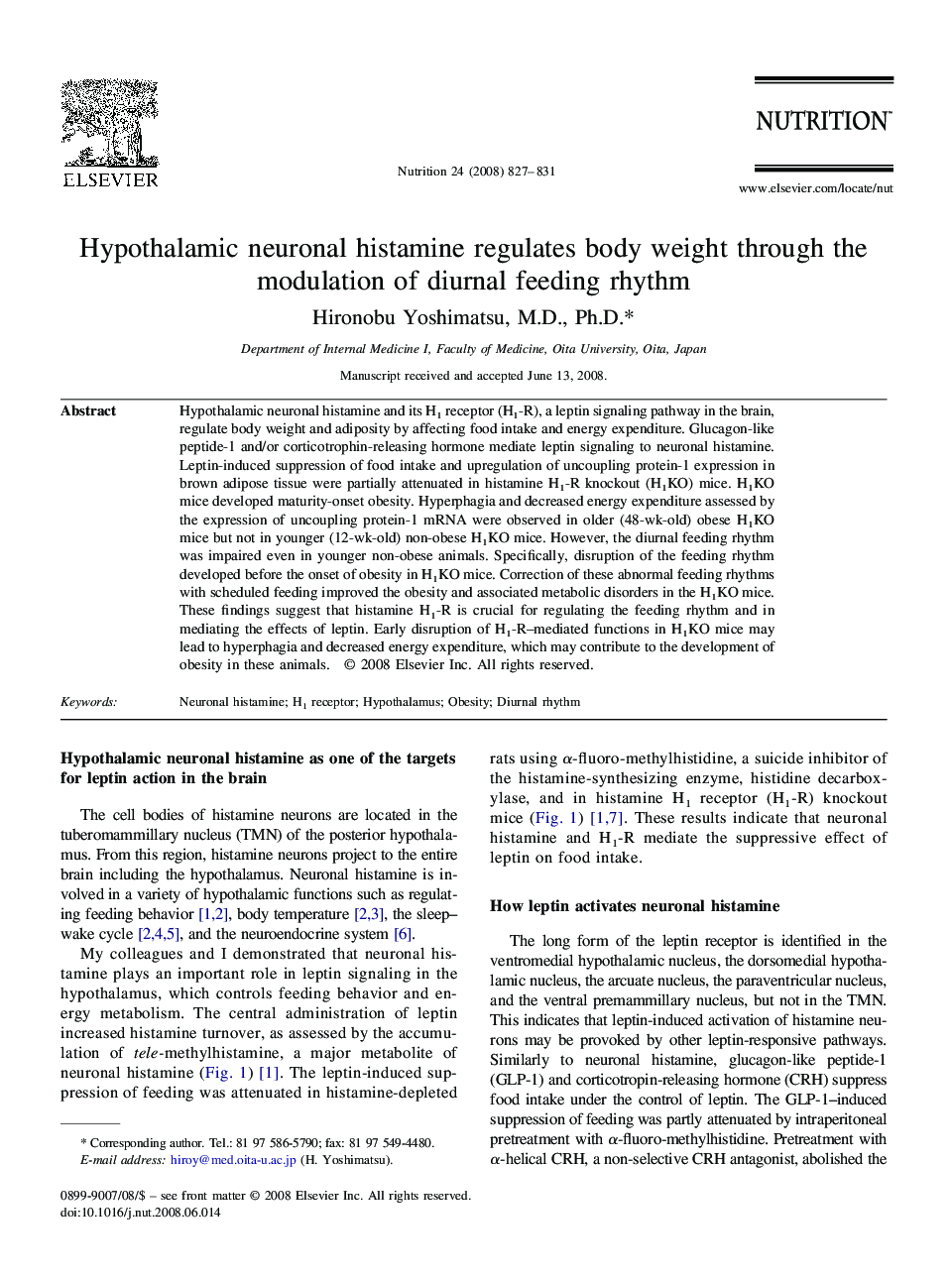| Article ID | Journal | Published Year | Pages | File Type |
|---|---|---|---|---|
| 6090649 | Nutrition | 2008 | 5 Pages |
Abstract
Hypothalamic neuronal histamine and its H1 receptor (H1-R), a leptin signaling pathway in the brain, regulate body weight and adiposity by affecting food intake and energy expenditure. Glucagon-like peptide-1 and/or corticotrophin-releasing hormone mediate leptin signaling to neuronal histamine. Leptin-induced suppression of food intake and upregulation of uncoupling protein-1 expression in brown adipose tissue were partially attenuated in histamine H1-R knockout (H1KO) mice. H1KO mice developed maturity-onset obesity. Hyperphagia and decreased energy expenditure assessed by the expression of uncoupling protein-1 mRNA were observed in older (48-wk-old) obese H1KO mice but not in younger (12-wk-old) non-obese H1KO mice. However, the diurnal feeding rhythm was impaired even in younger non-obese animals. Specifically, disruption of the feeding rhythm developed before the onset of obesity in H1KO mice. Correction of these abnormal feeding rhythms with scheduled feeding improved the obesity and associated metabolic disorders in the H1KO mice. These findings suggest that histamine H1-R is crucial for regulating the feeding rhythm and in mediating the effects of leptin. Early disruption of H1-R-mediated functions in H1KO mice may lead to hyperphagia and decreased energy expenditure, which may contribute to the development of obesity in these animals.
Related Topics
Health Sciences
Medicine and Dentistry
Endocrinology, Diabetes and Metabolism
Authors
Hironobu M.D., Ph.D.,
